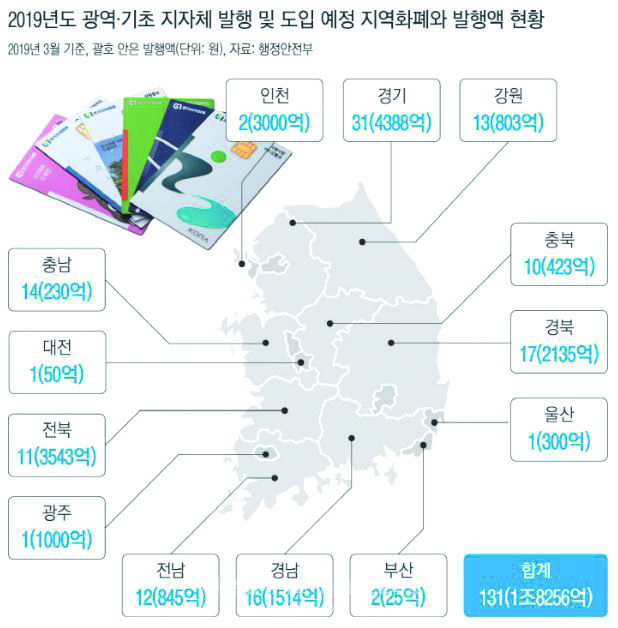
Local currency is an alternative currency that can only be used in the certain areas. It is basically used as a means to promote local domestic demand. In other words, it was used as money in local traditional markets or small merchants’ shops, but not outside that area. In the past, it existed mainly in the form of coupons. However, as technology has developed, it has evolved into a form of cards or ‘pay’ systems. Currently, there are local currencies in most parts of the country, including 31 in Incheon and Gyeonggi-do. Local currency operates in the form of expanding the use by offering tax benefits to both those who use it and those who receive it. It mainly provides cash back or discount benefits to users and provides operators with support based on the amount of sales. So where does the benefit come from? The amount of money spent on cash back or discounts is paid by local governments. In other words, the use of local currency is encouraged in order to revitalize the local economies, and taxes are administered to do so. Local currency, which recorded 89.2 billion won in issuance in 2015, rose to 371.4 billion won in 2018, will expand to 2 trillion won from 131 local governments this year. The rapid increase in the issuance of local currency is not a voluntary policy in each region, but a government initiative to revitalize the local economies. In order for local currency to spread widely, versatility and convenience are essential.
So, what is the origin of this form of local currency? The first local currency started in 1983 in Vancouver, Canada. The area was in trouble due to a slowdown in the timber industry, the main industry of the region, and the relocation of the U.S. Air Force base. Unemployment soared to 18 percent, and people had no cash. There was no way to break through the crisis. At this time, a man named Michael Linton created a currency that was only available in the region, named ‘Green Dollar,’ starting with six members. Local currency, which was then rapidly adopted in various parts of the world in the 1990s, has been actively sought after by local governments in Korea, and recently evolved into a ‘pay’ system after a meeting between the local governments and ICT(Information and Communication Technologies). If this system is adopted, the local currency will become more simple and spread faster.
When talking about local currency in Korea, Incheon cannot be left out of the discussion. Incheon is the most successful case of enforcing the use of local currency. Incheon offers local currency in the form of a card called the ‘E-eum Card’(‘E-eum’ means connecting in Korean). In particular, Incheon Seo-gu’s card returns 10% of the payment as cash back benefits. This is a huge benefit, considering that other local currency has a cash-back amount of just 5 to 6%. The E-eum Card’s amount issued topped 100 billion won in July, and the number of users also exceeded 200,000. Considering the population registered in the Seo-gu area of Incheon is 540,000 people, about 50 percent of the people used it. Backed by these success stories, local currency is spreading to the entire city of Incheon, including Yeonsu-gu, Namdong-gu, and Bupyeong-gu. Next is Gyeonggi-do’s ‘Gyeonggi-do currency.’ It is an alternative currency issued and used by 31 cities and counties. There are three types of Gyeonggi-do currency available. Among them, paper money is available at nine places, cards at thirty places, and mobile at three places. The issuance of card-type local currency in Gyeonggi-do reached about 200 billion won. In the past, there were many cases of abuse because it only existed in the form of paper money.
Nowadays, local currency is no longer able to be converted to electronic currency to manipulate the transaction details. If the local currency is activated, local governments will not only see the flow of the money within the region but also prevent capital from flowing to other regions. Also, let’s keep in mind that local currency is a tax expense. There is no local currency in Daegu yet, but it is making a number of moves, including holding a residents’ briefing session at the Dong-gu parliament. Most provinces are moving to create the local currency. Local currency is a system that benefits both the local governments that operate the system and the citizens who use it. A day will soon come when this trend spreads across the country and helps everyone. If local currency is also made available in Daegu, we should make efforts to use it.


